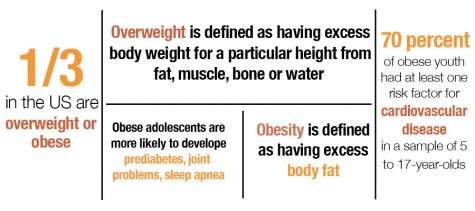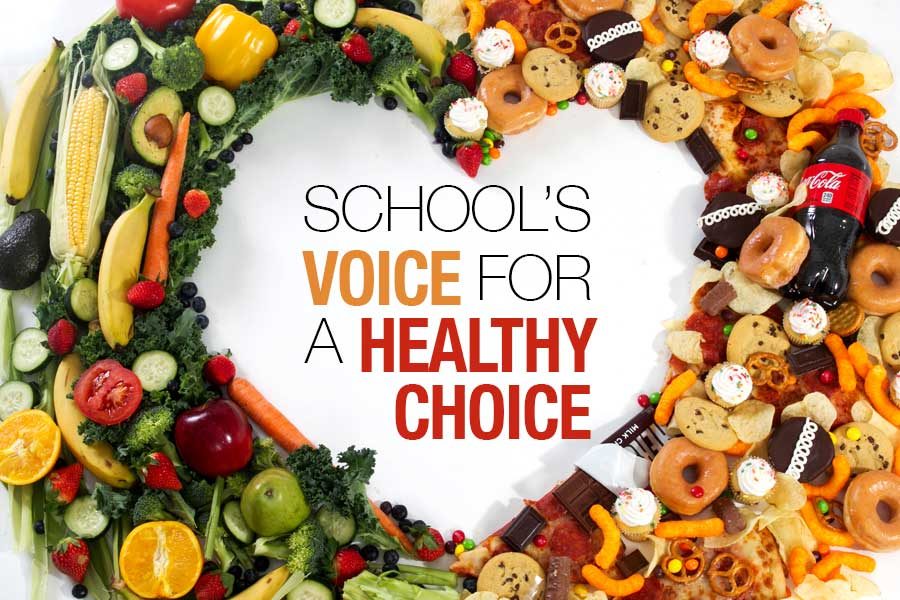Food without the fuel
Cafeteria strives to balance nutrition with taste
He looks in the mirror. He’s hungry, but you couldn’t tell. Though the number on the scale continues to rise and it looks as if he has enough in his belly to sustain himself for decades, he needs nutrients. He goes to school, rushes to the lunch line and grabs everything he can get. He’s full for now, but the meal he devoured still did not give his body what it really needs.
It’s evident in every state, every city and every high school. Teenage obesity is an issue sweeping the nation. In 2013, 13.7 percent of high school students were obese and 16.6 percent were overweight according to the Young Risk Behavior Surveillance System. Those numbers are steadily rising. Texas has the fifth highest high school obesity rate in the nation. These baffling statistics trigger concern and question. Why are students so unhealthy?
With childhood obesity being so common in America, there must be a common underlying factor. Many cases of teenage obesity stem from growing up in a negative or low income environment. When children are raised in a home that is struggling economically, they are not provided the needed amount of nutrition or exercise. Fast food is cheaper than fresh produce, organized sports are too expensive and in a household of people that work long hours for little money, there
is no time to cook or get in adequate exercise.
For these kids, school is their outlet. School is where they fill their stomachs, fuel their minds and hopefully break a little sweat. But it’s not as simple as it sounds. Students are still gaining weight, and lunches may not be as nutritious as they are claimed to be.
 “I don’t think our school lunches provide the amount of nutrition we need,” junior Hunter Burt said. “The lunches we had last year were a lot better because we had different meats to choose from, but now it’s just salads and stuff like that. Keep the salads, but provide more variety that kids can choose from.”
“I don’t think our school lunches provide the amount of nutrition we need,” junior Hunter Burt said. “The lunches we had last year were a lot better because we had different meats to choose from, but now it’s just salads and stuff like that. Keep the salads, but provide more variety that kids can choose from.”
Cafeterias are required to meet certain nutritional standards, and because of recent attention on childhood obesity, standards have adjusted. The current meal plan works to increase the availability of fruits, vegetables and whole grains, lower the amounts of sodium and set a specific calorie limit. While cafeterias must meet federal requirements, the schools themselves decide what foods to serve and how to prepare them.
“In the past few years, the meal pattern guidelines have become stricter,” TISD Assistant Director of Child Nutrition Christie Lammers said. “We create recipes in our test kitchen and have students rate them before we menu them. We conduct student taste tests on new products before we purchase them to make sure the students will accept the product as part of the menu.”
It seems though, no matter how much effort schools put into improving the quality and perception of cafeteria food, students still walk into the cafeteria with a less than pleased expression on their faces, and many still walk out overweight and unhealthy. This isn’t only affecting student’s well being. It can also negatively impact their education.
If kids aren’t properly nourished, it’s harder for them to pay attention and excel in education. — Jessica Sharp
“If kids aren’t properly nourished, it’s harder for them to pay attention and excel in education,” science teacher Jessica Sharp said. “A proper diet and nutrition are essential for brain growth. All we can do is try to provide them with healthy alternatives to snack food and get them to eat healthy.”
Many feel that the problem is not student’s defiance to healthy foods, but a lack of options available.
“People want a different variety,” sophomore Daniela Labrada said. “We need different types of food that kids can look for, like fresh vegetables and other things. People get bored and don’t want to eat the same food. That’s when they turn to junk food.”
Some however, have a different opinion and believe that the increase in childhood obesity is not the school system’s fault.
“The food that is served in the cafeteria has to meet certain standards from the state and Department of Agriculture,” teacher Amy Baker-Kireev said. “We present the food that we’re supposed to. Recent research says we can’t control what happens to a kid’s body. Gut bacteria seems to be a big factor influencing metabolism. This is something that is a lot more prevalent today than any other time.”
Though it is difficult to pinpoint the reason why, there is no doubt that high school obesity is a growing concern. Schools are actively working to break the cafeteria food stereotype and provide proper nutrients for their students to achieve success.
We feel like we are encouraging our students to enjoy all foods in moderation, a healthy lifestyle choice that will stick with them after high school.
— Christie Lammers, assistant child nutrition director
“We are progressive in our thinking at TISD Child Nutrition, and are always looking for ways to grow,” Lammers said. “A healthy diet is about balancing nutrient dense foods with foods that should be enjoyed occasionally. We feel like we are encouraging our students to enjoy all foods in moderation, a healthy lifestyle choice that will stick with them after high school. We plan to continue to provide the highest quality foods possible, listen to the voice of our students in our menu development, continue to introduce new and exciting items and provide nutrition education to our students.”

Anna Graves is third-year newspaper lover. She is print co-editor-in-chief with Tyler Snell, whom she either loves or cannot stand. She is also senior...

Beyonce. Mermaid. Beyonce-Mermaid. These are words that have been used to describe Brianna. Brianna is currently experiencing her third year of publications...








